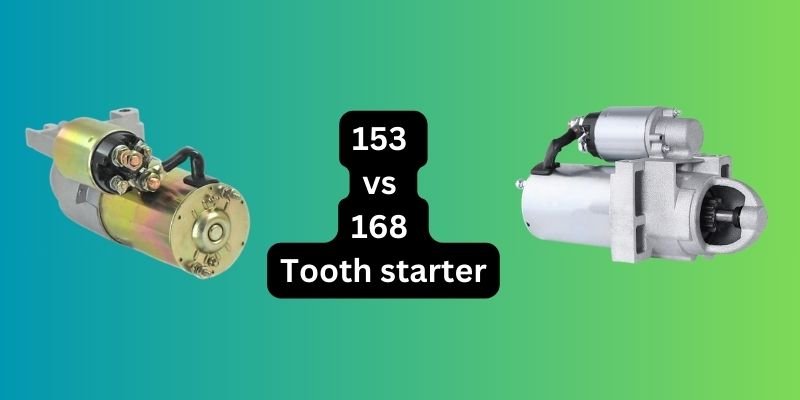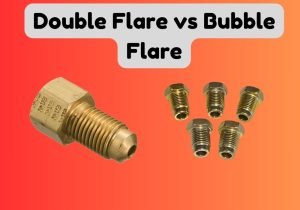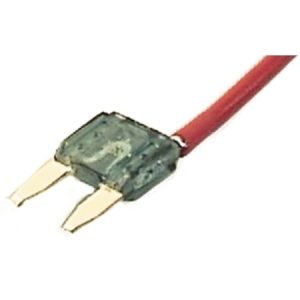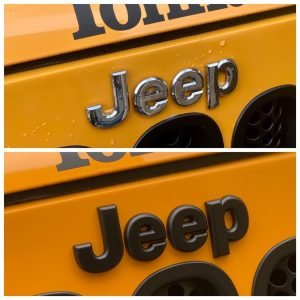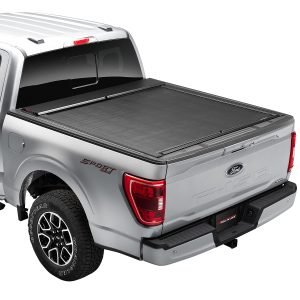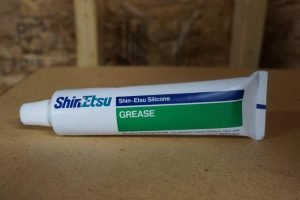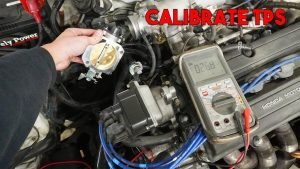The starter is a crucial component in any car engine, responsible for initiating the combustion process that powers the engine. There are two types of starters commonly used in automotive engines: the 153-tooth starter and the 168-tooth starter. While both starters serve the same purpose, there are differences between them that make them more suitable for different types of engines. In this blog post, we will explore the differences between the two types of starters and provide guidance on which one may be more appropriate for your engine.
Contents
What is a 153-tooth starter?
A 153-tooth starter is a type of starter that is commonly used in small-block and some big-block engines. The name refers to the number of teeth on the starter ring gear that the starter motor engages with. The 153-tooth starter is typically smaller in size compared to the 168-tooth starter, with a diameter of approximately 11 inches.
One of the advantages of the 153-tooth starter is its smaller size and weight, which makes it more suitable for smaller engines with less horsepower. This starter is also usually less expensive compared to the 168-tooth starter. However, the smaller size of the 153-tooth starter can lead to increased wear and tear, particularly when used with high-horsepower engines.
What is a 168-tooth starter?
A 168-tooth starter is a type of starter that is commonly used in big-block engines, as well as some small-block engines with higher horsepower. As with the 153-tooth starter, the name refers to the number of teeth on the starter ring gear. The 168-tooth starter is typically larger in size compared to the 153-tooth starter, with a diameter of approximately 14 inches.
One of the advantages of the 168-tooth starter is its larger size and weight, which makes it more durable and suitable for high-horsepower engines. It is also less likely to wear out compared to the 153-tooth starter due to its larger size. However, the 168-tooth starter is usually more expensive compared to the 153-tooth starter, and its larger size may not be necessary for smaller engines.
Comparison between 153-tooth and 168-tooth starter
Here is a comparison table between the 153-tooth and 168-tooth starters:
| 153-tooth Starter | 168-tooth Starter | |
| Size | Smaller | Larger |
| Teeth on Ring Gear | 153 | 168 |
| Suitable for | Smaller engines with lower horsepower | Larger engines with higher horsepower |
| Torque and Cranking Speed | Lower | Higher |
| Transmission Type | Manual | Automatic |
| Cost | Less expensive | More expensive |
| Availability | Widely available | May depend on engine type and model |
| Performance Requirements | Suitable for engines with lower torque and cranking speed | Suitable for engines with higher torque and cranking speed |
The main differences between the 153-tooth and 168-tooth starters are their size and the number of teeth on the ring gear. The 168-tooth starter is larger and has more teeth on the ring gear compared to the 153-tooth starter. As a result, the 168-tooth starter is more suitable for high-horsepower engines that require a larger and more durable starter. On the other hand, the 153-tooth starter is smaller and less expensive, making it more suitable for smaller engines with lower horsepower.
Another difference between the two starters is the torque and cranking speed they provide. Generally, the 168-tooth starter provides more torque and cranking speed compared to the 153-tooth starter. This is due to its larger size and more teeth on the ring gear, which allows for more efficient power transfer from the starter motor to the engine.
Overall, choosing between the 153-tooth and 168-tooth starter depends on the engine’s size and horsepower. Smaller engines with less horsepower may not require the larger and more expensive 168-tooth starter, while larger engines with higher horsepower may require the extra durability and torque provided by the 168-tooth starter.
Factors to consider when choosing between 153-tooth and 168-tooth starter
When choosing between the 153-tooth and 168-tooth starter, there are several factors to consider:
- Engine size and horsepower: The size and horsepower of the engine are critical factors to consider when choosing between the two starters. Generally, smaller engines with less horsepower require the 153-tooth starter, while larger engines with higher horsepower require the 168-tooth starter.
- Transmission type: The transmission type can also play a role in choosing between the two starters. Automatic transmissions require more torque to crank the engine compared to manual transmissions. As a result, automatic transmissions may require the 168-tooth starter, while manual transmissions may be suitable for the 153-tooth starter.
- Cost and availability: The cost and availability of the starters may also be a factor to consider. The 153-tooth starter is generally less expensive compared to the 168-tooth starter. However, the availability of the starters may depend on the engine type and model.
- Performance requirements: The performance requirements of the engine can also play a role in choosing between the two starters. If the engine requires a high cranking speed and torque, the 168-tooth starter may be more suitable.
Ultimately, the choice between the two starters will depend on the specific needs and requirements of the engine. It is recommended to consult with a professional mechanic or automotive specialist to determine the most suitable starter for your engine.
FAQ:
Q: What is the difference between a 153-tooth and 168-tooth starter?
A: The main difference between the two starters is their size and number of teeth on the ring gear. The 168-tooth starter is larger and has more teeth compared to the 153-tooth starter, making it more suitable for larger engines with higher horsepower.
Q: Which starter is more suitable for my engine?
A: The choice between the two starters depends on your engine’s size, horsepower, transmission type, cost, availability, and performance requirements. It is recommended to consult with a professional mechanic or automotive specialist to determine the most suitable starter for your engine.
Q: Are there any other factors to consider when choosing between the two starters?
A: Yes, other factors to consider include the type of vehicle (e.g., car, truck, boat), the type of driving (e.g., racing, towing), and the environment (e.g., hot, cold weather).
Q: Can I install a 168-tooth starter on an engine that requires a 153-tooth starter?
A: It is not recommended to install a larger starter on an engine that requires a smaller starter, as this may cause damage to the engine components and the starter.
Q: How long do starters last?
A: The lifespan of a starter can vary depending on several factors, such as the quality of the starter, the type of driving, and the maintenance of the engine. Generally, starters can last anywhere from 50,000 to 100,000 miles.
Q: How much does a starter cost?
A: The cost of a starter can vary depending on the make and model of the vehicle and the type of starter. On average, a starter can cost anywhere from $50 to $500.
Conclusion
In conclusion, the choice between the 153-tooth and 168-tooth starter depends on the engine’s size, horsepower, transmission type, cost, availability, and performance requirements. The 153-tooth starter is smaller, less expensive, and suitable for smaller engines with less horsepower, while the 168-tooth starter is larger, more durable, and suitable for larger engines with higher horsepower. Ultimately, it is essential to consult with a professional mechanic or automotive specialist to determine the most suitable starter for your engine. Choosing the appropriate starter will help ensure reliable engine performance and longevity.
Affiliate Disclosure: As an Amazon Associate, I earn from qualifying purchases made through links on this site.

